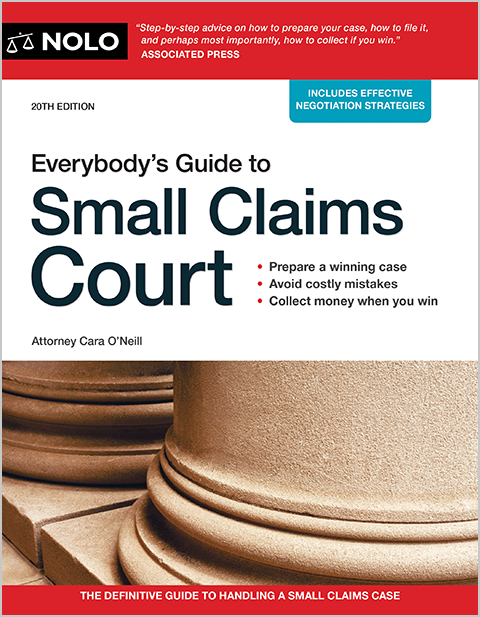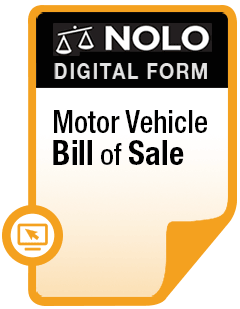The deadline for filing a car accident lawsuit in Utah, rules for reporting a car accident in Utah, and more.
If you've been injured or had your vehicle damaged in a traffic accident in Utah, you probably want to understand your options for getting compensation. In this article, we'll discuss a few Utah laws that could have a big impact on any car accident claim you decide to make, including:
- what Utah's no-fault car insurance rule means for your potential claim
- the deadlines for filing lawsuits over vehicle damage, injuries, or wrongful death
- Utah's "modified comparative fault" rule, which can reduce or even eliminate a victim's compensation, and
- the rules for reporting a car accident in Utah.
Utah's No-Fault Car Insurance Rules
Utah is one of a dozen or so states that follow a no-fault car insurance scheme. That means that, regardless of who might have been at fault for the accident, injured drivers and passengers must typically turn first to their own personal-injury-protection car insurance coverage to get compensation for medical bills, lost income, and other out-of-pocket losses.
Only if your injury claim meets certain prerequisites can you step outside of no-fault and bring a claim directly against the at-fault driver. The discussion in the following sections presumes that you're able to do that. You can also get more details on Utah's no-fault car insurance rules.
Car Accident Statutes of Limitations in Utah
A "statute of limitations" is a state law that sets a strict time limit on your right to bring a lawsuit to court.
(Note: The statute of limitations does not apply to a car insurance claim. Any insurance company, whether your own or the other driver's, is going to require you to make a claim—or at least give the insurer notice of an incident that could trigger a claim—"promptly" or "within a reasonable time" after the accident. That usually means a few days at most. Learn more about contacting your car insurance company after an accident.)
In Utah, there are a few different rules and deadlines that could come into play after a vehicle accident.
The deadline for injuries. Utah doesn't have a statute of limitations specifically for car accident injuries. Instead, the state has a general four-year deadline for negligence lawsuits, including personal injury lawsuits brought by people who've been hurt in car crashes. (Utah Code § 78B-2-307(4) (2025); McTee v. Weber Ctr. Condo. Ass'n, (2016 UT App 134).)
Any injury claim filed by a driver, passenger, motorcyclist, bicyclist, electric scooter rider, or pedestrian after a car accident will be subject to this deadline. The "clock" starts running on the date of the accident.
The deadline for wrongful death. If someone is killed in a car accident, the person's family or representatives have two-years to file a wrongful death claim in Utah. Keep in mind that, for these kinds of claims, the two-year "clock" starts running on the date of the accident victim's death (not on the date of the accident). (Utah Code § 78B-2-304(2) (2025).)
The deadline for property damage. Under Utah law, if your vehicle (or any other property) is damaged in a car accident you have four years to file a lawsuit against the person responsible. (Utah Code § 78B-2-307(3) (2025).)
Whichever of these deadlines applies, if you try to file your car accident lawsuit after the applicable time limit has passed, you can count on the defendant (the person you're trying to sue) pointing out that discrepancy to the court as part of a motion to dismiss. The court will almost certainly grant the motion (unless some rare exception applies to extend the filing deadline), and that will be the end of your case. That's why it's crucial to understand how the statute of applies to your situation.
Even if you're confident that your case will be resolved through the car insurance claim process, you'll want to leave yourself plenty of time to file a lawsuit in case you need to—if for no other reason than that you'll have more leverage during settlement talks. If you think you might be running up against the filing deadline, you may want to contact an experienced Utah car accident attorney.
Comparative Negligence in Utah Car Accident Cases
Suppose you're seriously injured in a Utah car accident, and you take your case to court. The jury, after hearing all the evidence, decides that the other driver was responsible for the accident—but that you too bear part of the blame. What happens next? How does this verdict affect your right to compensation?
Utah is a "modified comparative negligence" state. This means you can still recover damages in a car-accident-related lawsuit, but your award will be reduced according to your share of negligence—and importantly, your share of liability must be less than 50 percent in order to recover from other at-fault parties. (Utah Code § 78B-5-818 (2025).)
For instance, suppose that the jury determines that your injuries, pain and suffering, and other losses total $20,000. However, the jury also thinks that you were ten percent responsible for the crash. In that situation, the total amount of your damages, $20,000, is reduced by ten percent, or $2,000, leaving you with a total award of $18,000.
The comparative negligence rule binds Utah judges and juries (if your car accident case makes it to court), and it will also guide a car insurance claims adjuster when he or she is evaluating your case. Also keep in mind that since there is no empirical means of allocating fault, any assignment of liability will ultimately come down to your ability to negotiate with a claims adjuster or to persuade a judge or jury.
Reporting a Car Accident
Utah law requires drivers involved in an accident to "immediately and by the quickest means of communication available" (i.e. a phone call from the scene) give notice of the accident to the nearest law enforcement agency. (Utah Code § 41-6a-401.7 (2025).
The Utah Department of Public Safety may also ask the drivers involved in the crash to prepare a traffic accident report. If so, the report must be filed with the department within ten days of the request. You can learn more about these requirements by reading Section 41-6a-402 of the Utah Code.
Next Steps After a Car Accident in Utah
If you've been hurt or suffered property damage in a car accident, it's important to understand your options. That's especially true in Utah, since its no-fault car insurance rule may significantly affect how insurance companies and courts deal with your claim. So it may be helpful to discuss your case with an attorney.
Have you been in a car accident?
Take our free car accident quiz to find out if you're likely to get a settlement.



